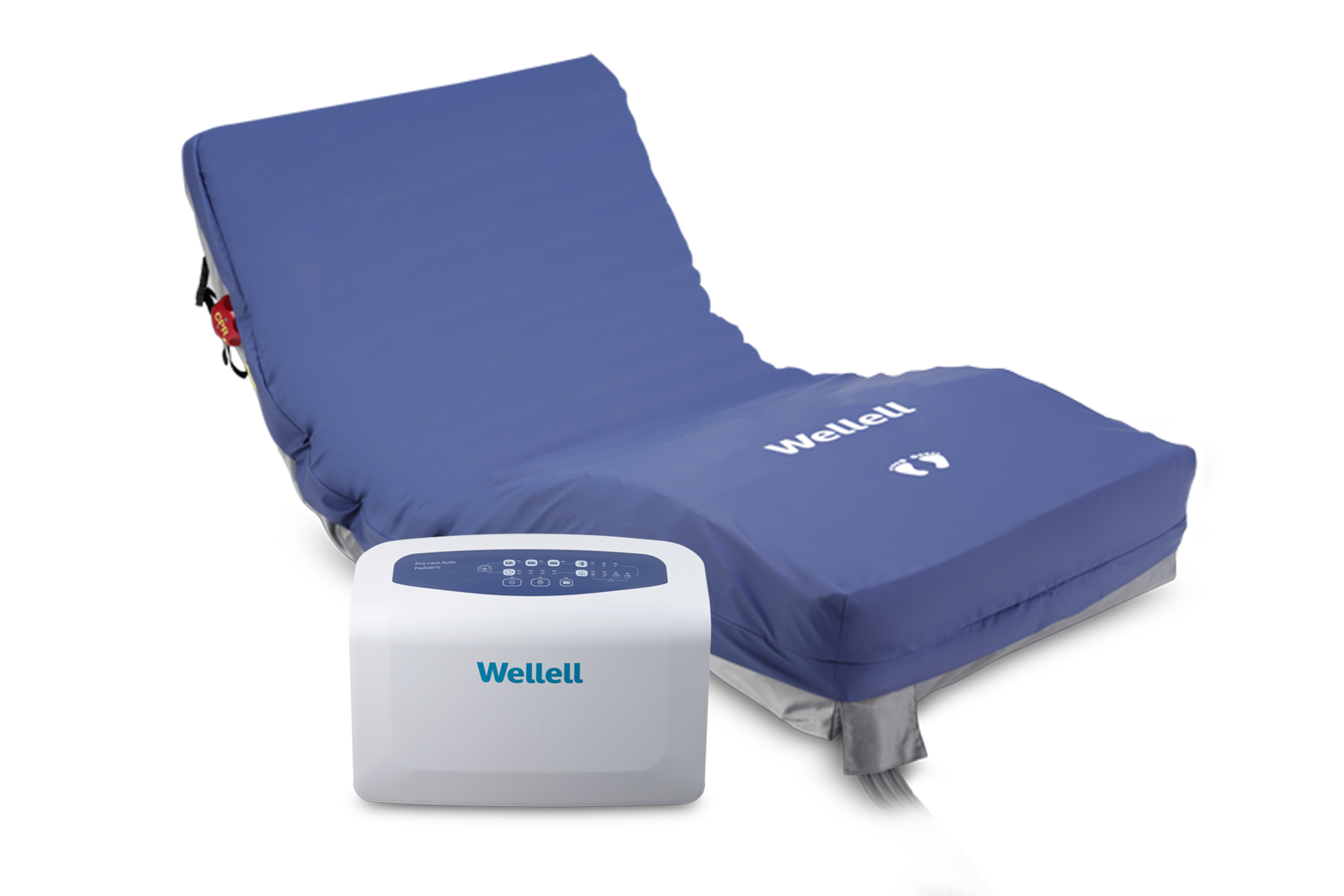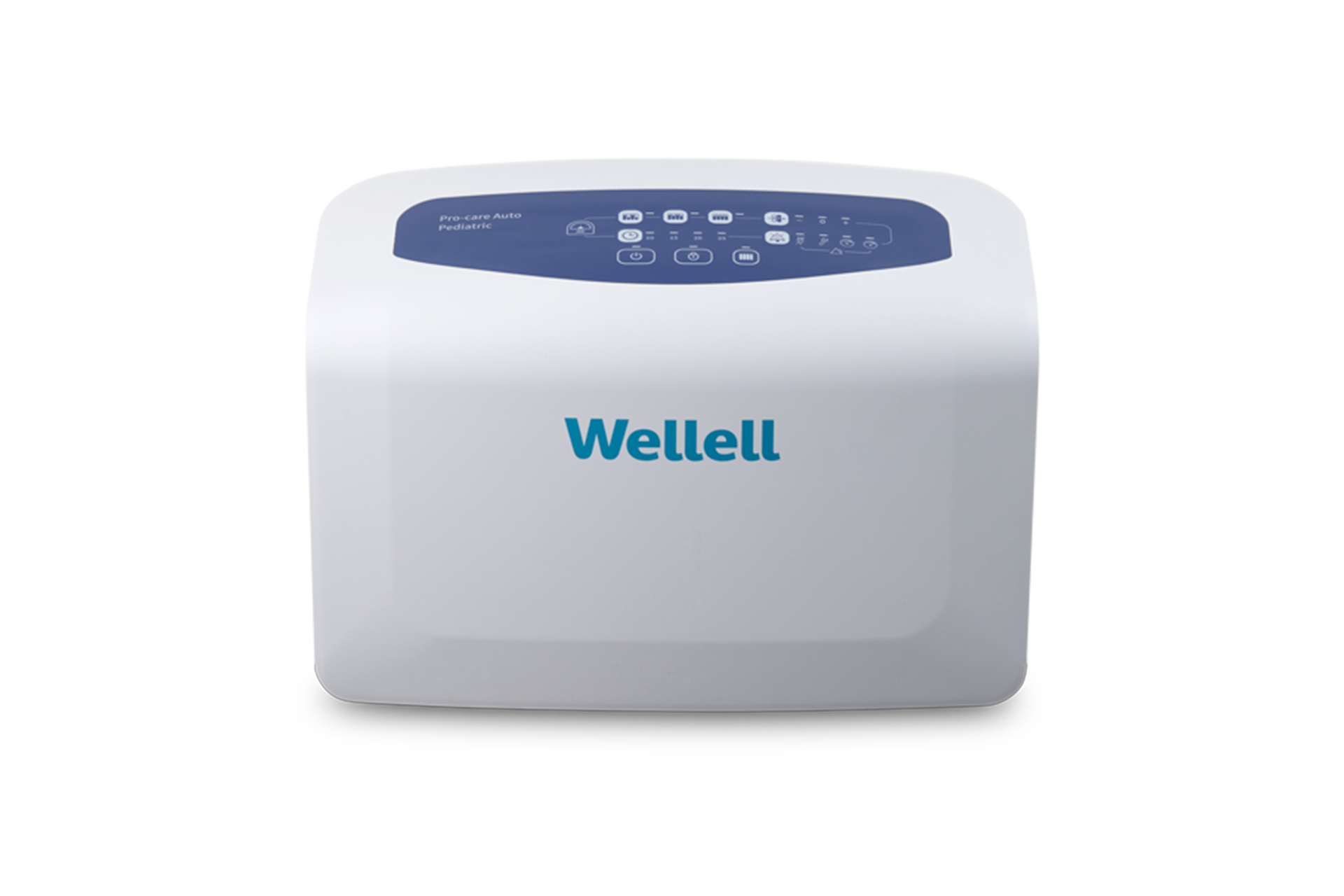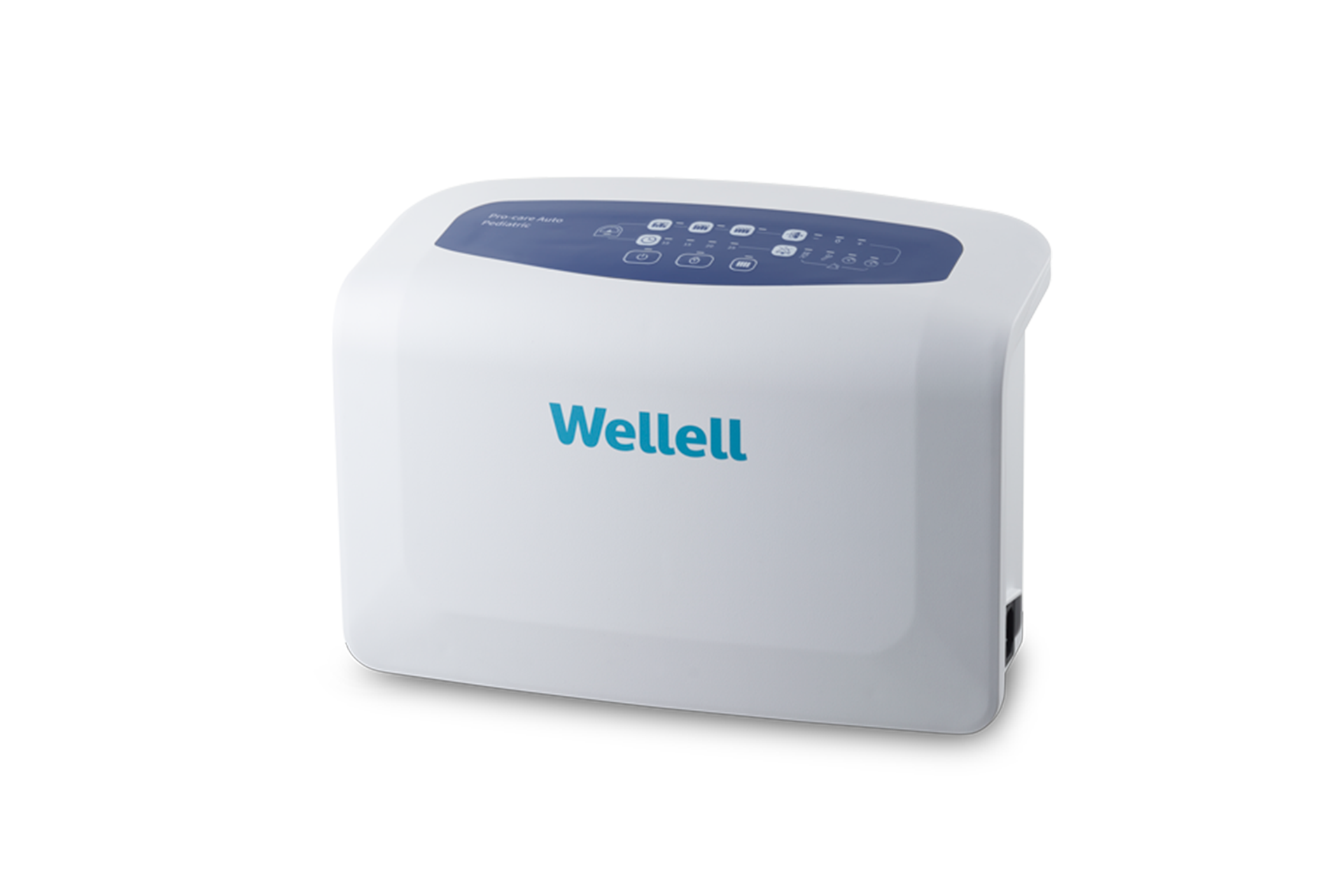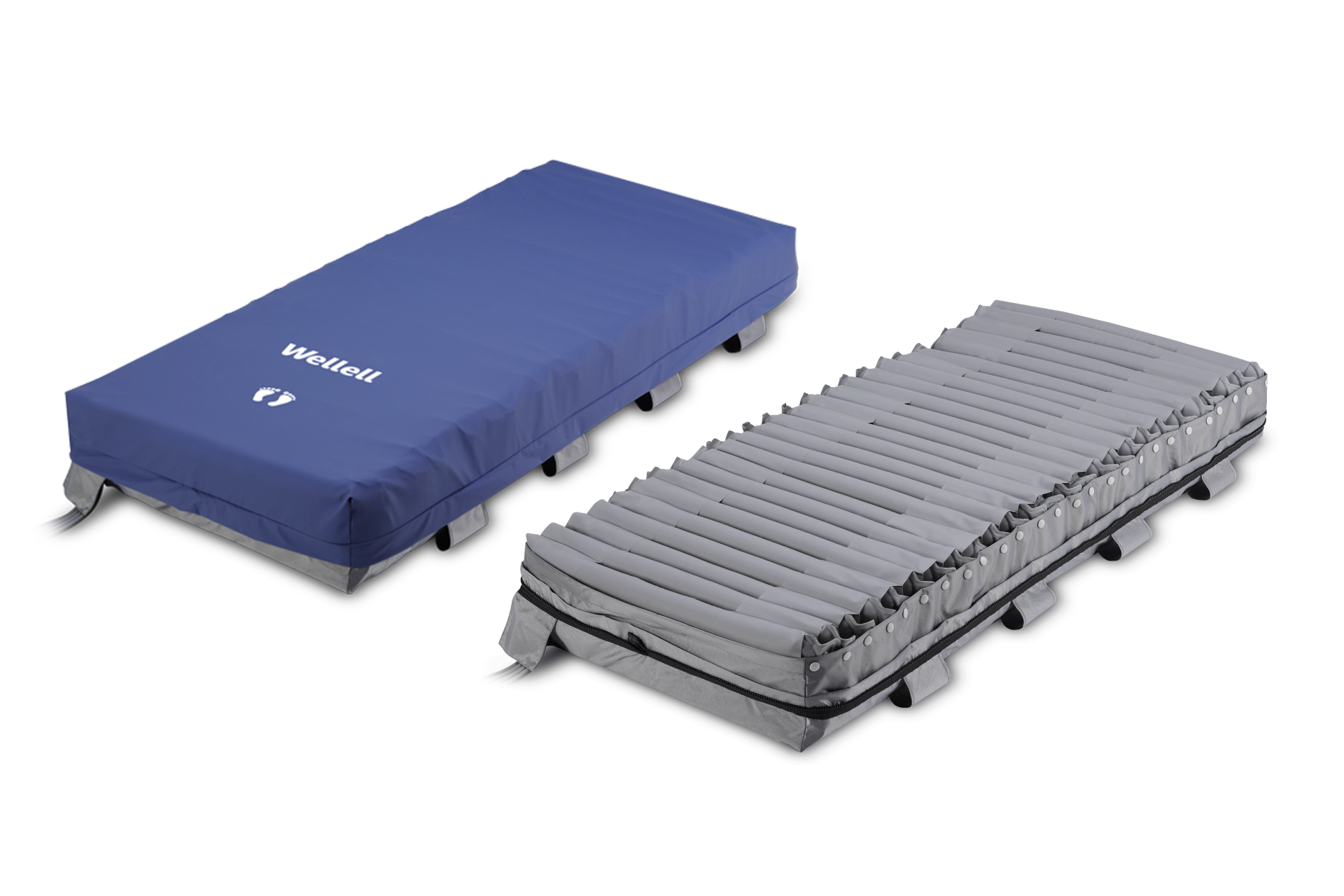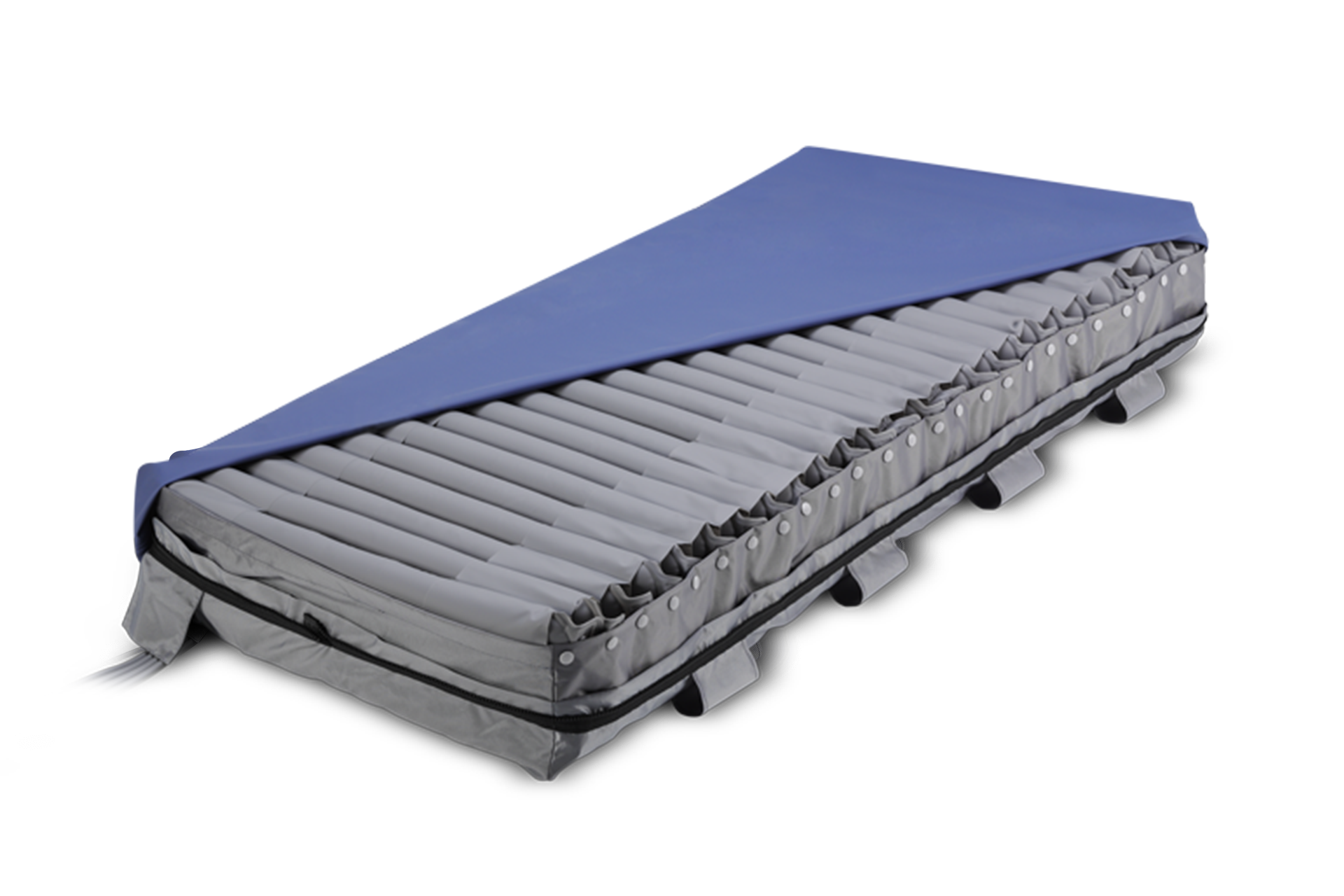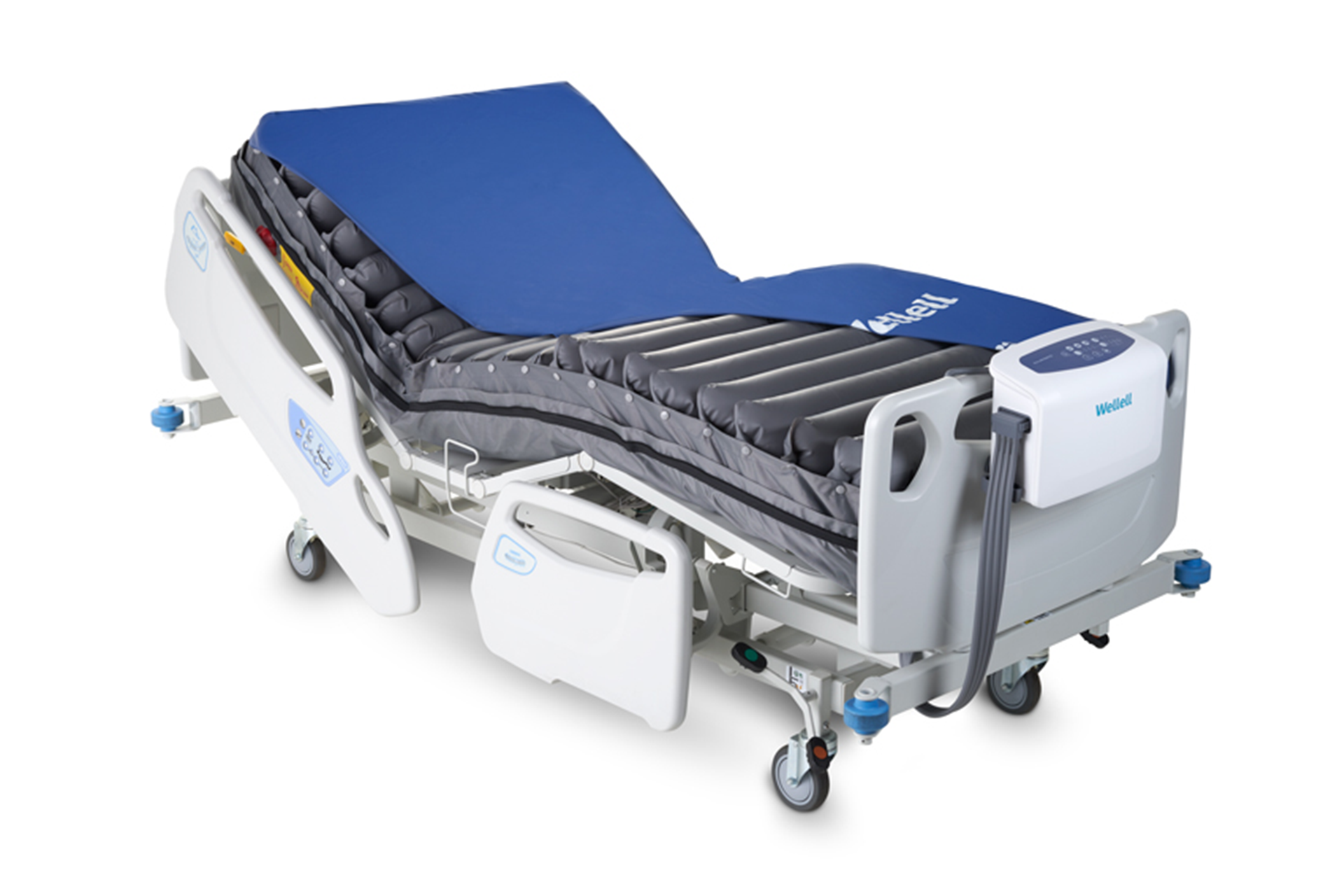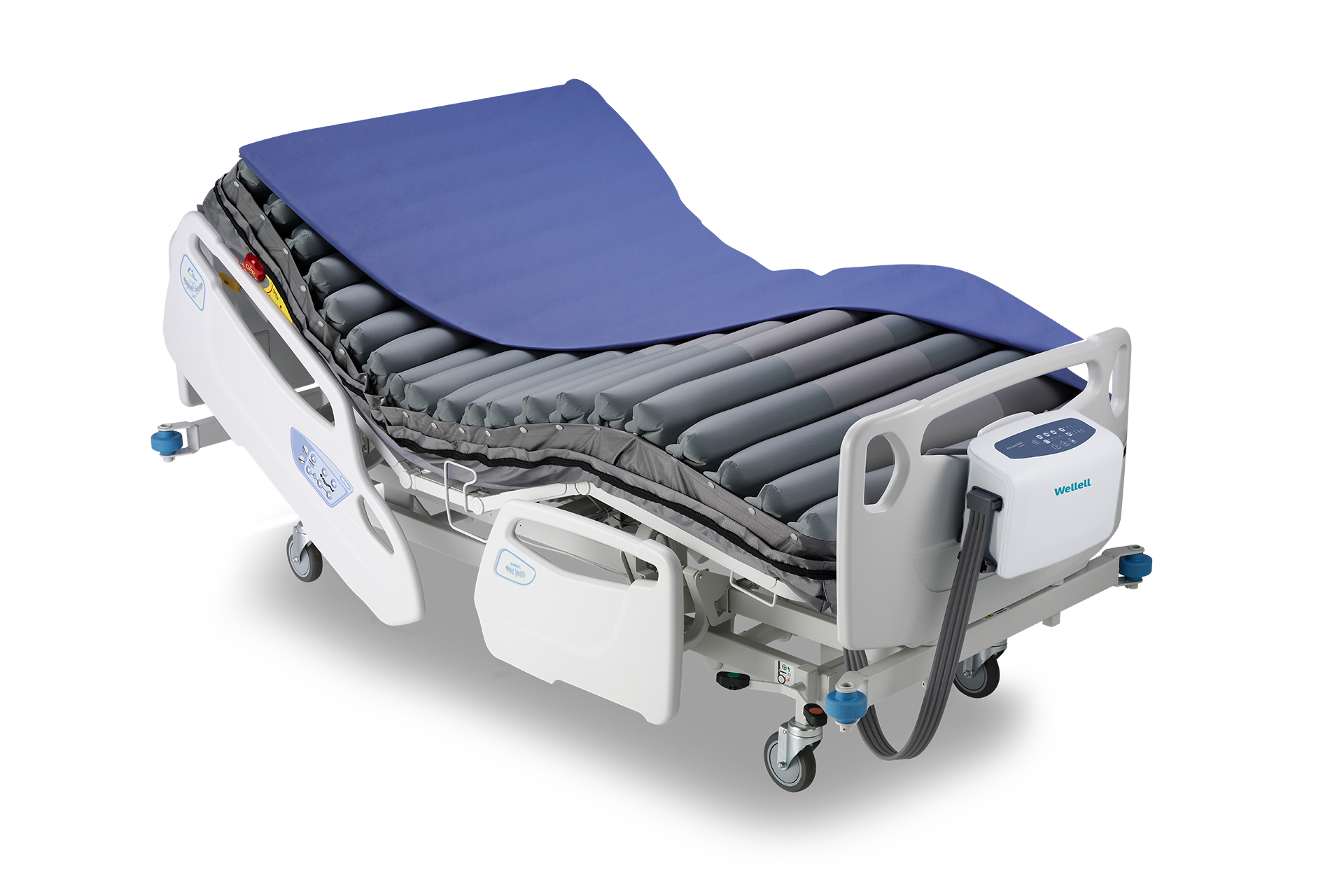Pro-care Auto Pediatric
Pressure Relief Mattress for Hospital BedFor High to Very High Risk
Design for Pediatric Pressure Injury Prevention — Improving full body pressure injury and deformation prevention in petite patients.
Abbreviations: PI, pressure injury; PICU, pediatric ICU.
75% of pediatric patients (unsuitable to be treated as adults) worldwide develop PI, especially in neonates and children with chronic diseases. Underdeveloped tissues and structures weaken their resistance to pressure and awareness of pain, accelerating PI and deformation development.1-3,7
Head PI is common in younger patients due to a larger, heavier head and lack of a fatty protective layer. Other frequent sites include ankles, heels, hips, and sacrum area. Pediatric PI is 94% more costly than adult PI cases and extends hospitalization by 14 days, increasing caregivers' workload.2,4-6
Pro-care Auto Pediatric simplifies caregivers' workflow and care accuracy with air cells that conform to smaller bodies — patented. It automates mattress firmness to optimize head-to-toe pressure relief, minimizing PI and deformation-related risks for petite patients (5 kg to 95 kg).
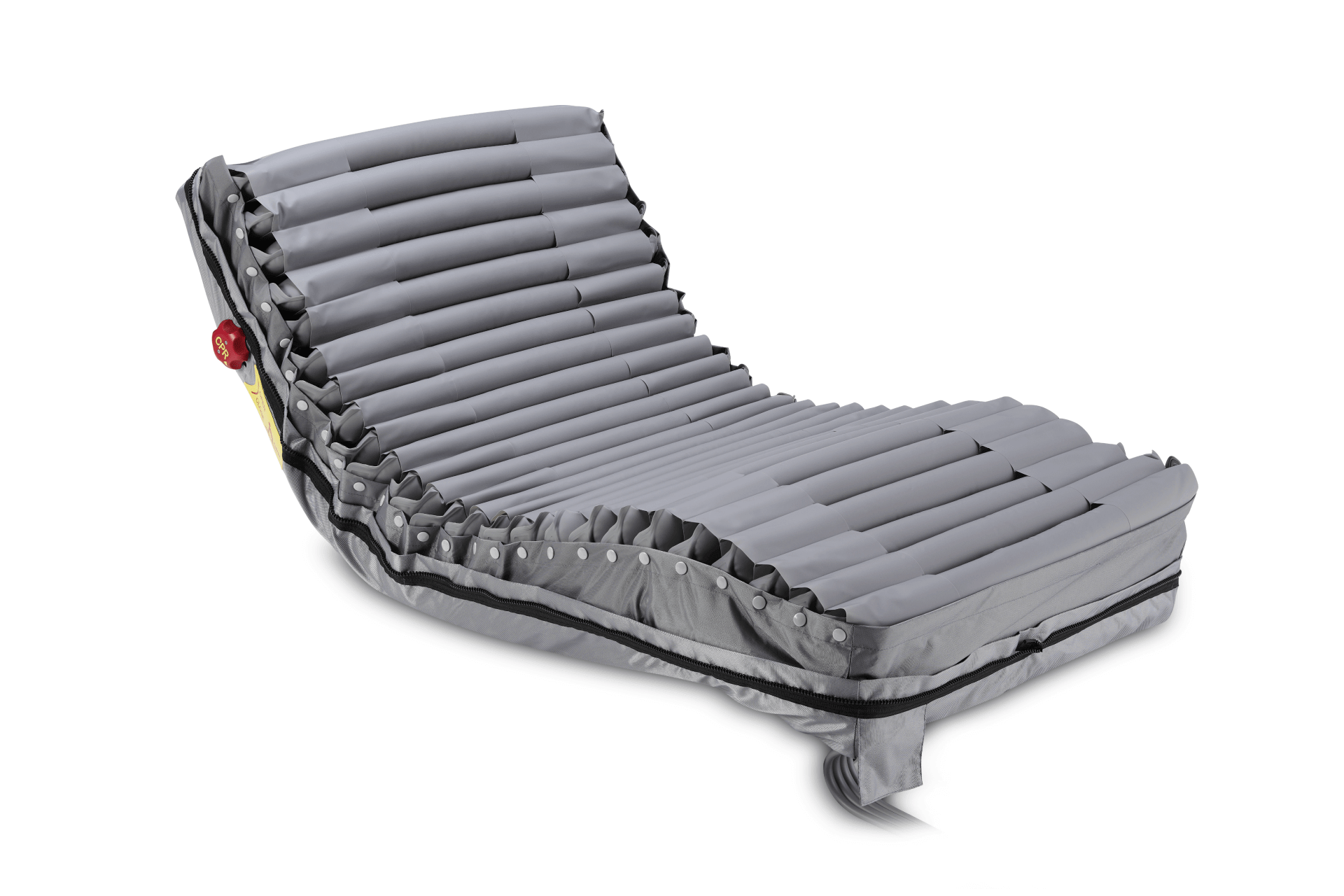
Maintain high-quality care for petite patients
- Suitable for improving pressure injury prevention in in-hospital and care facility petite patients.
- Narrower and more tightly packed air cells enhance comfort and stability to support petite bodies.
- Full body alternating therapy to reduce occiput pressure injury and deformation risks.
- Alternating Low Pressure mode for optimizing full body pressure distribution and experience with gentle movements.
- Quiet pump minimizes disruptions to the patient’s recovery.
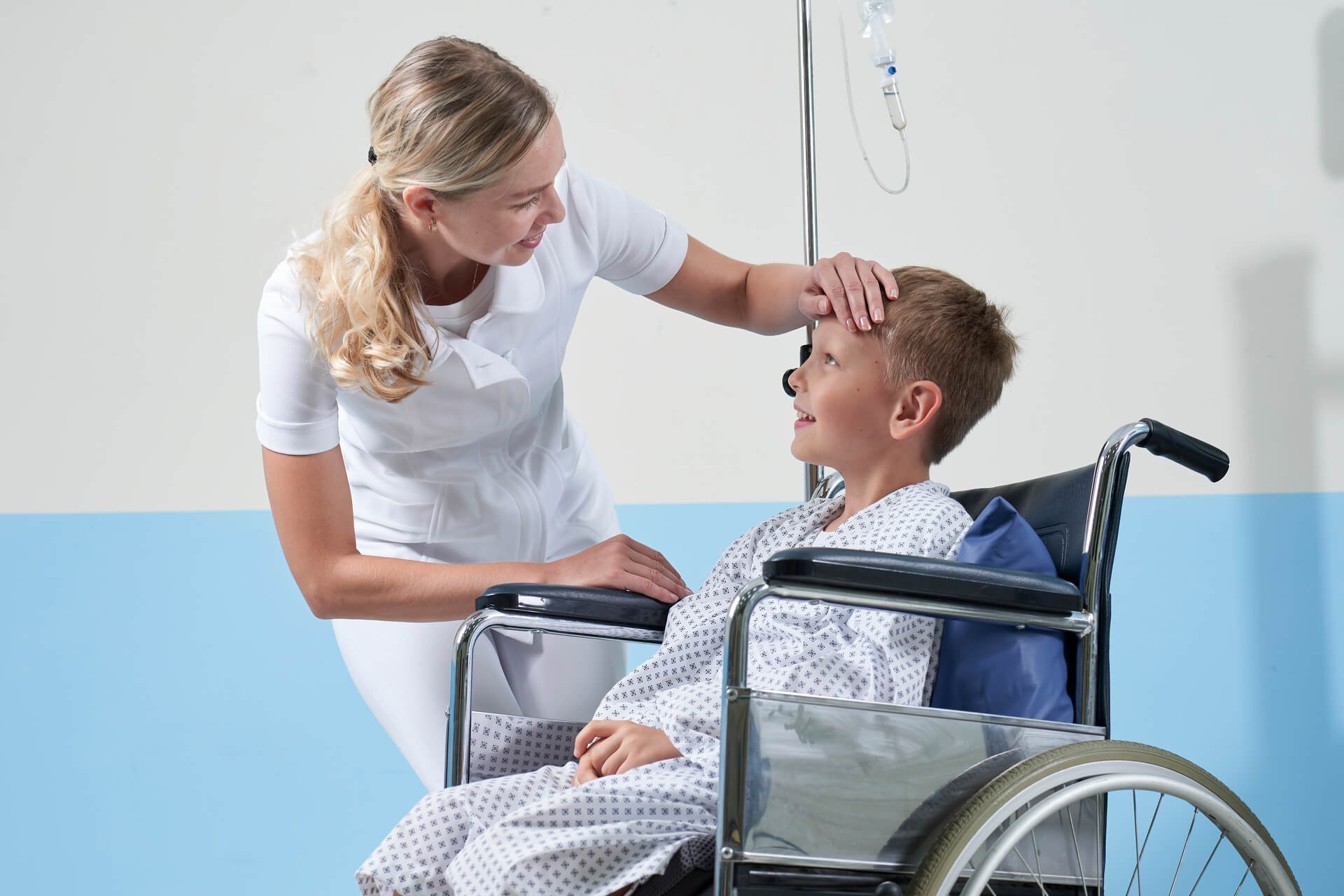
Improves pressure injury prevention for pediatric patients with cerebral palsy (usually smaller, underweight, less mobile).
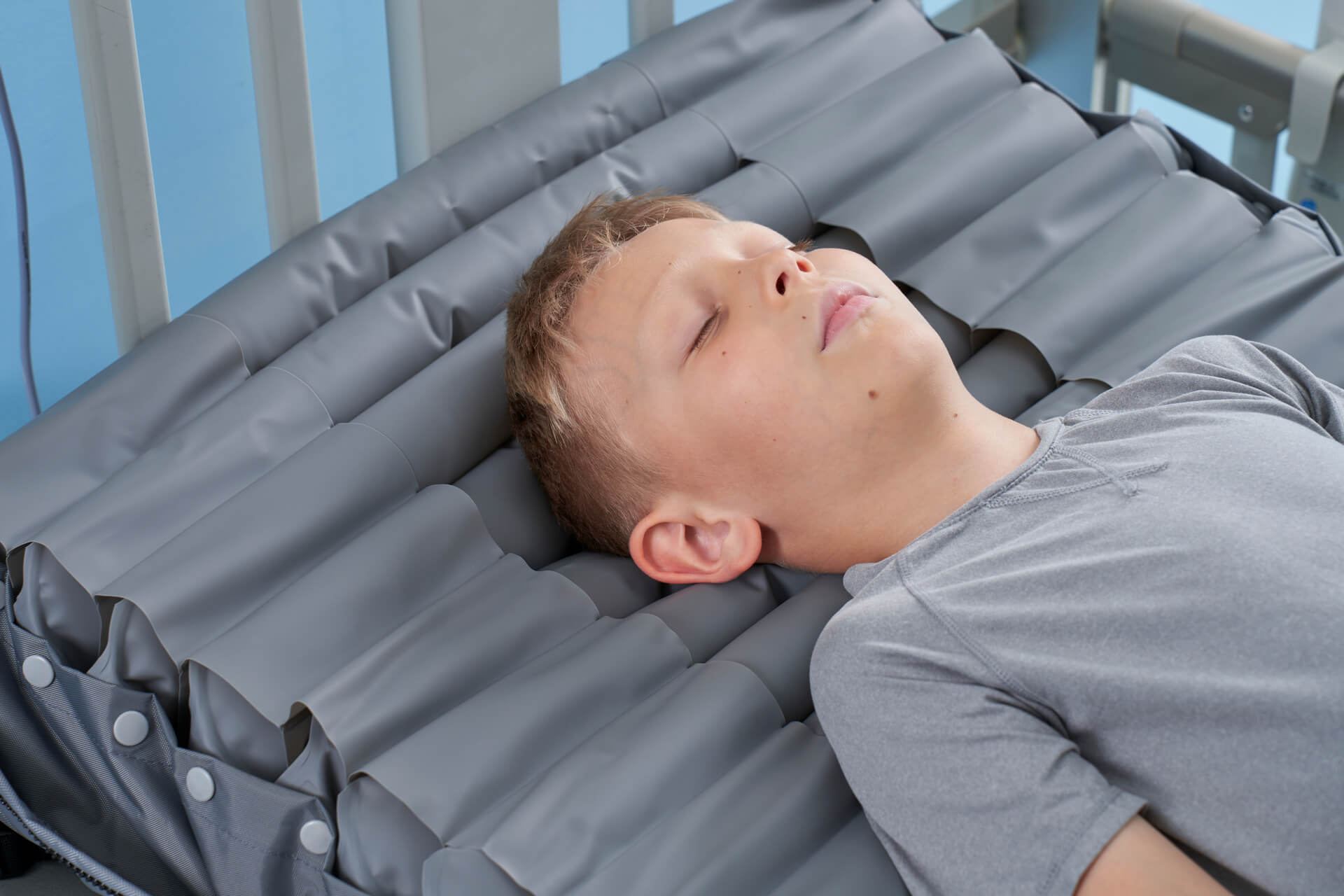
Full body pressure redistribution improves prevention against occiput and other pressure injuries for supine and lateral positions.
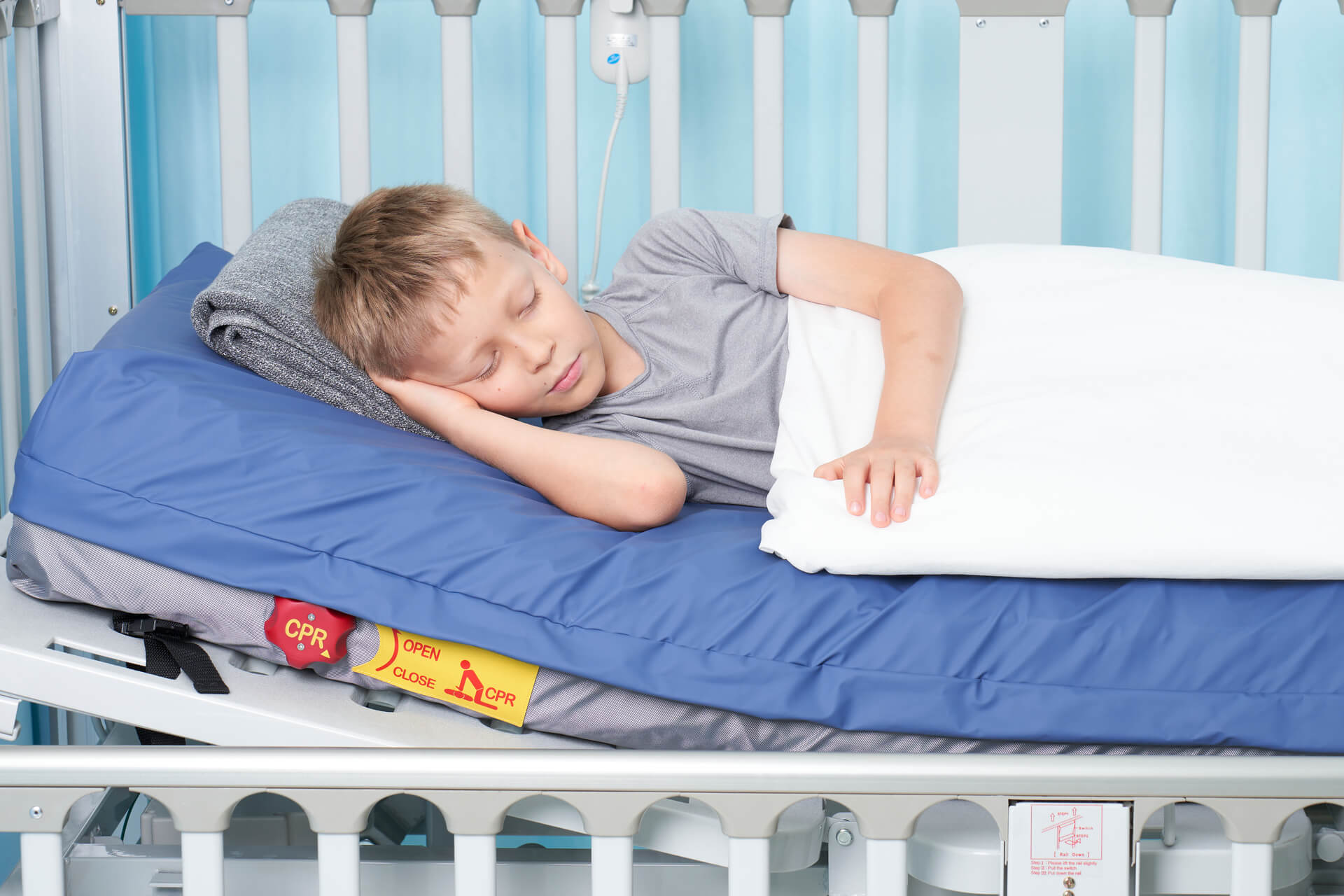
Narrower (5.8 cm), sturdier, and more tightly packed air cells improve pressure relief and prevent bottoming out or trapped limbs — patented design.
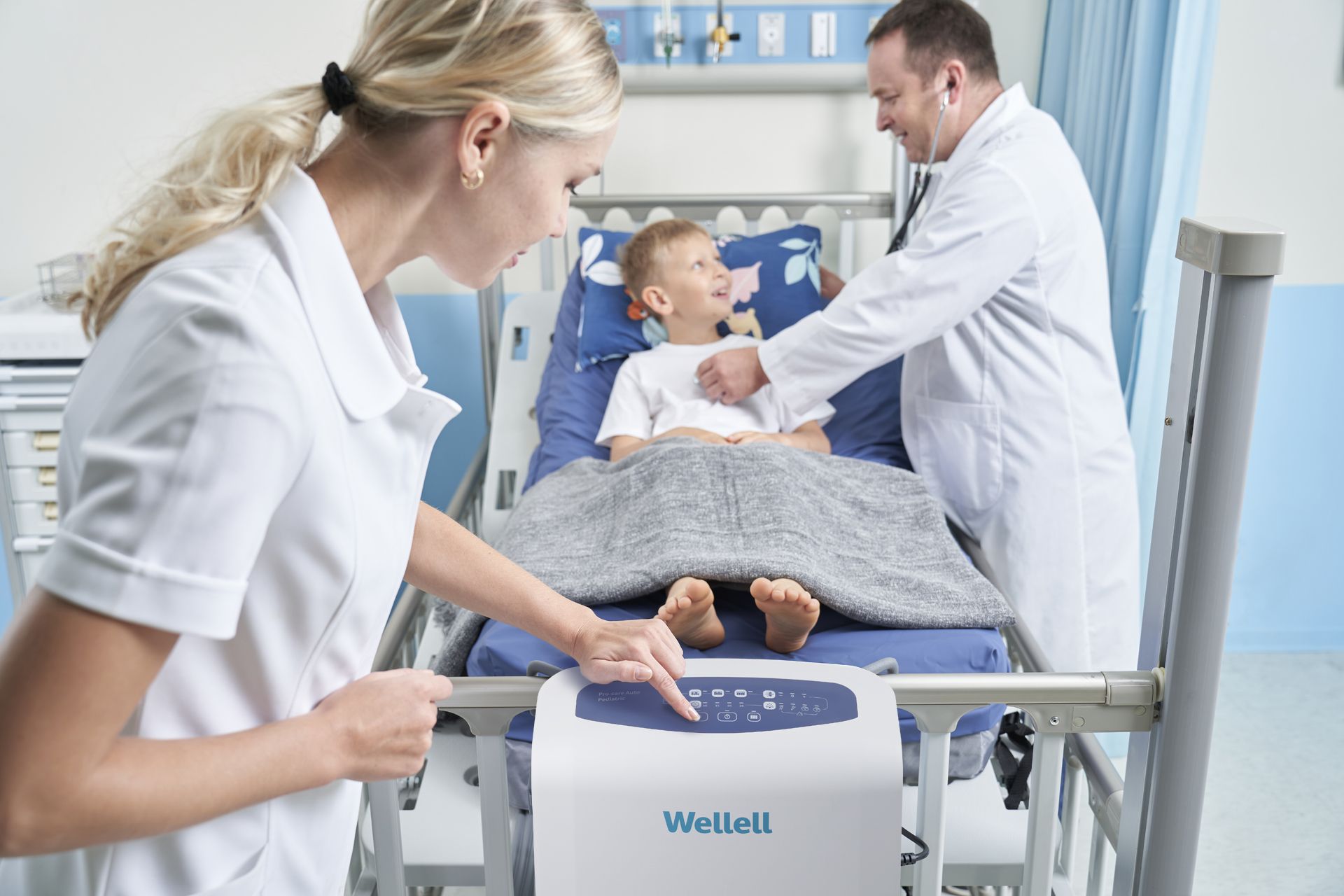
Disconnecting the quick connector switches the operating mode to static, convenient for transportation.
| Pro-care Auto Pediatric | ||
|---|---|---|
| Mattress Dimension (L x W x H ) | 55.1-59.1 x 25.6-27.6 x 7 in | 1400-1500 x 650-700 x 180 mm |
| Mattress Weight | 20.9 lb | 9.5 kg |
| Maximum Patient Weight | 209 lb | 95kg |
| Pump Dimension (L x W x H ) | 13.4 x 5.3 x 8.1 in | 340 x 135 x 205 mm |
| Supply Voltage | 220-240 V / 50-60 Hz |
|

Maintain high-quality care for petite patients
- Suitable for improving pressure injury prevention in in-hospital and care facility petite patients.
- Narrower and more tightly packed air cells enhance comfort and stability to support petite bodies.
- Full body alternating therapy to reduce occiput pressure injury and deformation risks.
- Alternating Low Pressure mode for optimizing full body pressure distribution and experience with gentle movements.
- Quiet pump minimizes disruptions to the patient’s recovery.

Improves pressure injury prevention for pediatric patients with cerebral palsy (usually smaller, underweight, less mobile).

Full body pressure redistribution improves prevention against occiput and other pressure injuries for supine and lateral positions.

Narrower (5.8 cm), sturdier, and more tightly packed air cells improve pressure relief and prevent bottoming out or trapped limbs — patented design.

Disconnecting the quick connector switches the operating mode to static, convenient for transportation.
All air cells are made from Thermoplastic Polyurethanes (TPU). It is highly resistant to breaking down when in contact with water (hydrolysis), soft to touch, and minimizes friction and noise during patient movements.
The cover is made with nylon/PU and is vapor permeable, fire-resistant, and water-resistant. See specifications for more details on the fire-retardant standards.
Reference
- Delmore, B., Deppisch, M., Sylvia, C., Luna-Anderson, C., & Nie, A. M. (2019). Pressure injuries in the pediatric population: a national pressure ulcer advisory panel white paper. Advances in Skin & Wound Care, 32(9), 394-408.
- Kottner, J., Cuddigan, J., Carville, K., Balzer, K., Berlowitz, D., Law, S., ... & Haesler, E. (2019). Prevention and treatment of pressure ulcers/injuries: The protocol for the second update of the international Clinical Practice Guideline 2019. Journal of tissue viability, 28(2), 51-58.
- Baharestani, M. M., & Ratliff, C. R. (2007). Pressure ulcers in neonates and children: an NPUAP white paper. Advances in skin & wound care, 20(4), 208-220.
- Triantafyllou, C., Chorianopoulou, E., Kourkouni, E., Zaoutis, T. E., & Kourlaba, G. (2021). Prevalence, incidence, length of stay and cost of healthcare-acquired pressure ulcers in pediatric populations: a systematic review and meta-analysis. International Journal of Nursing Studies, 115, 103843.
- Levy, A., Kopplin, K., & Gefen, A. (2015). Adjustability and adaptability are critical characteristics of pediatric support surfaces. Advances in wound care, 4(10), 615-622.
- Goudie, A., Dynan, L., Brady, P. W., Fieldston, E., Brilli, R. J., & Walsh, K. E. (2015). Costs of venous thromboembolism, catheter-associated urinary tract infection, and pressure ulcer. Pediatrics, 136(3), 432-439.
- Boylan C. Paediatric pressure injuries: considerations for this patient cohort. Wound Practice and Research 2020; 28(2):84-89.

